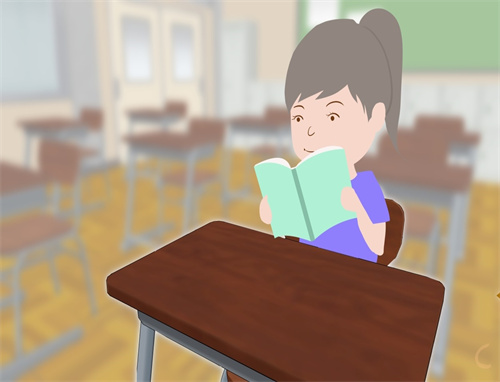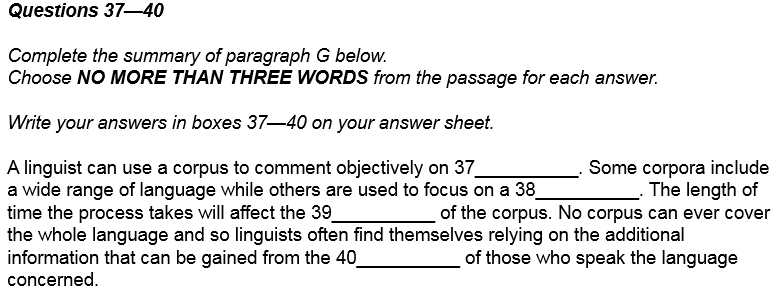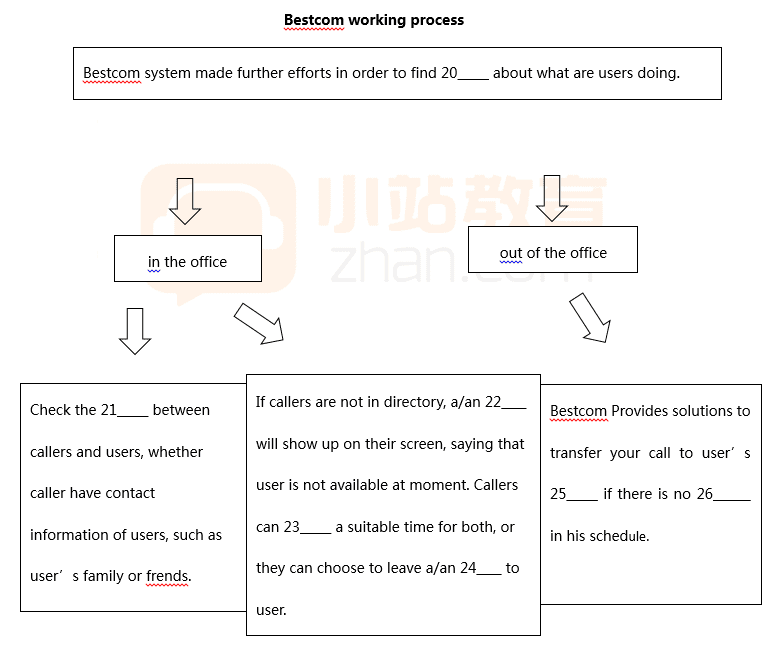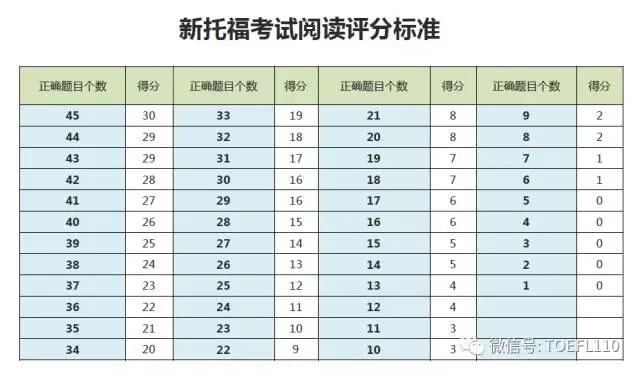那就是热点就是答案。为什么这样说,热点又是什么东西呢?今天小编给大家带来了雅思阅读高分黄金法则,希望能够帮助到大家,下面小编就和大家分享,来欣赏一下吧
【雅思阅读高分黄金法则】热点就是答案
一般来讲,列表、调查数据、试验结果、数字,数据和其它此类信息就是雅思考试的“热点”。换句话说,一旦我们在雅思阅读考试时遇到这些,就应立即注意。这些将是我们找到特定问题答案的工具。这就是雅思阅读高分的黄金法则。
一般而言,雅思考试要求你做的仅仅是重复它给出的信息,没有必要记住这些信息。而这些信息太多了,所以我们所要做的只是找出它们。同样,在寻找的过程中,有几种提高速度的特定方法。
首先,我们可以利用数字或符号(如?、etc.)。阅读文章时这些东西会很醒目使你很容易的定位。当你看到一个问题中提到了“,000”,现在你就会了解文章中的答案也应在此数字的前后。如果你找到了这个数字,你也就找到了此问题的答案。这一事实使热点尤为重要。例如,一个问题中提到了“1937”,这一数据可以在文中被轻松找到。在这一数据旁边,你就可以找到答案。这一雅思阅读高分的黄金法则之所以这么有效,是因为雅思考试中的问题往往很细节化,答案也往往在这些细节的热点旁边。
以下面的片断为例:
“The changing awareness has been most marked in English-speaking countries,spheres the revelation has gradually dawned that by no means everyone in the world knows English well enough to negotiate in it. This is especially a problem when English is not an official language of public administration,as in most parts of the Far East,Russia,Eastern Europe,the Arab world,Latin America and French-speaking Africa.”
当我们一看到这些国家名的列表(典型热点),就应立即引起注意。为什么要注意呢?虽然不是数字或数据,它们是一系列专用名词。这些专用名词也很容易在文章中找到。周围的词可能很难浏览,会需要你停顿下来想它们的意思,但热点却非常容易找到。这里的国家太多很难记住。我们不必如此。事实上我们可以不读此部分,只知道是一串国家即可。一旦在问题中看到这些热点,就利用它们找出答案。
极有可能会出现这的问题:“An example of a part of the world spheres people may have difficulty in negotiation in English is…”读到此问题,我们会立即意识到它在问一个国家名。因为我们已经注意到了可能的热点,找到它就不会存在任何困难。任何一个国家都可以。例如,我们在此空中填“Latin America”,就完成了。利用热点,我们可以在知道问题之前就猜测可能的答案。
雅思考试阅读模拟试题及答案解析
Felicity Lawrence
Thursday December 28, 2006
The Guardian
1. Consumers are to be presented with two rival new year advertising campaigns as the Food Standards Agency goes public in its battle with the industry over the labelling of unhealthy foods.
2. The Guardian has learned that the FSA will launch a series of 10-second television adverts in January telling shoppers how to follow a red, amber and green traffic light labelling system on the front of food packs, which is designed to tackle Britain’s obesity epidemic.
3. The campaign is a direct response to a concerted attempt by leading food manufacturers and retailers, including Kellogg’s and Tesco, to derail the system. The industry fears that traffic lights would demonise entire categories of foods and could seriously damage the market for those that are fatty, salty or high in sugar.
4. The UK market for breakfast cereals is worth £1.27bn a year and the manufacturers fear it will be severely dented if red light labels are put on packaging drawing attention to the fact that the majority are high in salt and/or sugar.
5. The industry is planning a major marketing campaign for a competing labelling system which avoids colour-coding in favour of information about the percentage of "guideline daily amounts" (GDAs) of fat, salt and sugar contained in their products.
6. The battle for the nation’s diet comes as new rules on television advertising come into force in January which will bar adverts for unhealthy foods from commercial breaks during programmes aimed at children. Sources at the TV regulators are braced for a legal challenge from the industry and have described the lobbying efforts to block any new ad ban or colour-coded labelling as "the most ferocious we’ve ever experienced".
7. Ofcom’s chief executive, Ed Richards, said: "We are prepared to face up to any legal action from the industry, but we very much hope it will not be necessary." The FSA said it was expecting an onslaught from the industry in January. Senior FSA officials said the manufacturers’ efforts to undermine its proposals on labelling could threaten the agency’s credibility.
8. Terrence Collis, FSA director of communications, dismissed claims that the proposals were not based on science. "We have some of the most respected scientists in Europe, both within the FSA and in our independent advisory committees. It is unjustified and nonsensical to attack the FSA’s scientific reputation and to try to undermine its credibility."
9. The FSA is understood to have briefed its ad agency, United, before Christmas, and will aim to air ads that are "non-confrontational, humorous and factual" as a counterweight to industry’s efforts about the same time. The agency, however, will have a tiny fraction of the budget available to the industry.
10. Gavin Neath, chairman of Unilever UK and president of the Food and Drink Federation, has said that the industry has made enormous progress but could not accept red "stop" signs on its food.
11. Alastair Sykes, chief executive of Nestlé UK, said that under the FSA proposals all his company’s confectionery and most of its cereals would score a red. "Are we saying people shouldn’t eat confectionery? We’re driven by consumers and what they want, and much of what we do has been to make our products healthier," he said.
12. Chris Wermann, director of communications at Kellogg’s, said: "In principle we could never accept traffic light labelling."
13. The rival labelling scheme introduced by Kellogg’s, Danone, Unilever, Nestlé, Kraft and Tesco and now favoured by 21 manufacturers, uses an industry-devised system based on identifying GDAs of key nutrients. Tesco says it has tested both traffic lights and GDA labels in its stores and that the latter increased sales of healthier foods.
14. But the FSA said it could not live with this GDA system alone because it was "not scientific" or easy for shoppers to understand at a glance.
Questions 1-6
Answer the questions below using NO MORE THAN THREE WORDS from the passage for each answer.
1. When will instructions be given on reading the color-coded labels?
2. Where can customers find the red light labels?
3. What problem is the FSA trying to handle with the labeling system?
4. Which product sells well but may not be healthy?
5. What information, according to the manufacturers, can be labeled on products?
6. What can not be advertised during children’s programmes?
Questions 7-13
Use the information in the text to match the people (listed A-E) with the opinions (listed 7-13) below. Write the appropriate letter (A-E) for questions 1-7.
NB You may use any letter more than once.
A Ed Richard
B Terrence Collis
C Gavin Neath
D Alastair Sykes
E Chris Wermann
7. Generally we will not agree to use the red light labels.
8. It is unreasonable to doubt if FSA is trustworthy.
9. We are trying to meet our consumers’ needs.
10. The food industry has been improving greatly.
11. The color-coded labeling system is scientific.
12. Our products will be labeled unhealthy by the FSA.
13. We are ready to confront the manufacturers.
Answer keys:
1. 答案:(in) January (见第2段:The Guardian has learned that the FSA will launch a series of 10-second television adverts in January telling shoppers how to follow a red, amber and green traffic light labelling system on the front of food packs, which is designed to tackle Britain’s obesity epidemic.)
2. 答案:food packs/packaging (见第2段:The Guardian has learned that the FSA will launch a series of 10-second television adverts in January telling shoppers how to follow a red, amber and green traffic light labelling system on the front of food packs, which is designed to tackle Britain’s obesity epidemic. 或者在第4段中也提到另一个答案:The UK market for breakfast cereals is worth £1.27bn a year and the manufacturers fear it will be severely dented if red light labels are put on packaging drawing attention to the fact that the majority are high in salt and/or sugar.)
3. 答案:(Britain’s) obesity epidemic (见第2段:The Guardian has learned that the FSA will launch a series of 10-second television adverts in January telling shoppers how to follow a red, amber and green traffic light labelling system on the front of food packs, which is designed to tackle Britain’s obesity epidemic.)
4. 答案:(breakfast) cereals (见第4段:The UK market for breakfast cereals is worth £1.27bn a year and the manufacturers fear it will be severely dented if red light labels are put on packaging drawing attention to the fact that the majority are high in salt and/or sugar.)
5. 答案:guieline daily amounts/GDAs (见第5段:The industry is planning a major marketing campaign for a competing labelling system which avoids colour-coding in favour of information about the percentage of "guideline daily amounts" (GDAs) of fat, salt and sugar contained in their products.)
6. 答案:unhealthy foods (见第6段第1句:The battle for the nation’s diet comes as new rules on television advertising come into force in January which will bar adverts for unhealthy foods from commercial breaks during programmes aimed at children.)
7. 答案:E (见第12段:Chris Wermann, director of communications at Kellogg’s, said: "In principle we could never accept traffic light labelling." )
8. 答案:B (见第8段最后一句:It is unjustified and nonsensical to attack the FSA’s scientific reputation and to try to undermine its credibility.)
9. 答案:D (见第11段最后1句:We’re driven by consumers and what they want, and much of what we do has been to make our products healthier.)
10. 答案:C (见第10段:Gavin Neath, chairman of Unilever UK and president of the Food and Drink Federation, has said that the industry has made enormous progress but could not accept red "stop" signs on its food.)
11. 答案:B (见第8段:Terrence Collis, FSA director of communications, dismissed claims that the proposals were not based on science. "We have some of the most respected scientists in Europe, both within the FSA and in our independent advisory committees. It is unjustified and nonsensical to attack the FSA’s scientific reputation and to try to undermine its credibility.")
12. 答案:D (见第11段第1句:Alastair Sykes, chief executive of Nestlé UK, said that under the FSA proposals all his company’s confectionery and most of its cereals would score a red.)
13. 答案:A (见第7段第1句:Ofcom’s chief executive, Ed Richards, said: "We are prepared to face up to any legal action from the industry, but we very much hope it will not be necessary.")
雅思考试阅读模拟试题及答案解析
1. A European spacecraft took off today to spearhead the search for another "Earth" among the stars.
2. The Corot space telescope blasted off aboard a Russian Soyuz rocket from the Baikonur cosmodrome in Kazakhstan shortly after 2.20pm.
3. Corot, short for convection rotation and planetary transits, is the first instrument capable of finding small rocky planets beyond the solar system. Any such planet situated in the right orbit stands a good chance of having liquid water on its surface, and quite possibly life, although a leading scientist involved in the project said it was unlikely to find "any little green men".
4. Developed by the French space agency, CNES, and partnered by the European Space Agency (ESA), Austria, Belgium, Germany, Brazil and Spain, Corot will monitor around 120,000 stars with its 27cm telescope from a polar orbit 514 miles above the Earth. Over two and a half years, it will focus on five to six different areas of the sky, measuring the brightness of about 10,000 stars every 512 seconds.
5. "At the present moment we are hoping to find out more about the nature of planets around stars which are potential habitats. We are looking at habitable planets, not inhabited planets. We are not going to find any little green men," Professor Ian Roxburgh, an ESA scientist who has been involved with Corot since its inception, told the BBC Radio 4 Today programme.
6. Prof Roxburgh said it was hoped Corot would find "rocky planets that could develop an atmosphere and, if they are the right distance from their parent star, they could have water".
7. To search for planets, the telescope will look for the dimming of starlight caused when an object passes in front of a star, known as a "transit". Although it will take more sophisticated space telescopes planned in the next 10 years to confirm the presence of an Earth-like planet with oxygen and liquid water, Corot will let scientists know where to point their lenses.
8. Measurements of minute changes in brightness will enable scientists to detect giant Jupiter-like gas planets as well as small rocky ones. It is the rocky planets - that could be no bigger than about twice the size of the Earth - which will cause the most excitement. Scientists expect to find between 10 and 40 of these smaller planets.
9. Corot will also probe into stellar interiors by studying the acoustic waves that ripple across the surface of stars, a technique called "asteroseismology".
10. The nature of the ripples allows astronomers to calculate a star’s precise mass, age and chemical composition.
11. "A planet passing in front of a star can be detected by the fall in light from that star. Small oscillations of the star also produce changes in the light emitted, which reveal what the star is made of and how they are structured internally. This data will provide a major boost to our understanding of how stars form and evolve," Prof Roxburgh said.
12. Since the discovery in 1995 of the first "exoplanet" - a planet orbiting a star other than the Sun - more than 200 others have been found by ground-based observatories.
13. Until now the usual method of finding exoplanets has been to detect the "wobble" their gravity imparts on parent stars. But only giant gaseous planets bigger than Jupiter can be found this way, and they are unlikely to harbour life.
14. In the 2010s, ESA plans to launch Darwin, a fleet of four or five interlinked space telescopes that will not only spot small rocky planets, but analyse their atmospheres for signs of biological activity.
15. At around the same time, the US space agency, Nasa, will launch Terrestrial Planet Finder, another space telescope designed to locate Earth-like planets. Choose the appropriate letter from A-D for question 1.
1. Corot is an instrument which
(A) can help to search for certain planets
(B) is used to find planets in the orbit
(C) can locate planets with human beings
(D) can spot any planets with water.
Do the following statements agree with the information given in the reading passage? For questions 2-5 write
TRUE if the statement agrees with the information
FALSE if the statement contraicts the information
NOT GIVEN if there is no information on this in the passage
2. Scientists are trying to find out about the planets that can be inhabited.
3. BBC Radio 4 recently focuses on the broadcasting of Corot.
4. Passing objects might cause a fall in light.
5. Corot can tell whether there is another Earth-like planet.
Based on your reading of the passage, complete the sentences below with words taken from the passage. Use NO MORE THAN THREE WORDS for each answer.
With measurements, scientists will be able to search for some gaseous and rocky planets. They will be extremely excited if they can discover some small 6. __________, the expected number of which could be up to 7. __________ .
Corot will enable scientists to study the 8. __________ of stars. In this way, a star’s mass, age and chemical composition can be calculated.
According to Prof Roxburgh, changes in light can be caused by passing planets or star 9. __________. The related statistics can gain us a better 10. __________ of the star formation and evolvement.
Observatories have found many exoplanets, which are 11. __________ other stars than the Sun. The common way used in finding exoplanets can only detect huge gas planets, which do not 12. ___________ .
With the launching of Darwin, astronomers will be able to analyse whether those rocky planets have 13. __________ for life.
Answer keys:
1. 答案:A (第3段第1句:Corot, short for convection rotation and planetary transits, is the first instrument capable of finding small rocky planets beyond the solar system. A项中的certain planets指small rocky planets beyond the solar system.)
2. 答案:TRUE (第5段第1、2句: At the present moment we are hoping to find out more about the nature of planets around stars which are potential habitats. We are looking at habitable planets, not inhabited planets. 问题中的“that can be inhabited”意思就是inhabitable.)
3. 答案:NOT GIVEN (文中没有提及该信息。)
4. 答案:TRUE (第7段第1句:To search for planets, the telescope will look for the dimming of starlight caused when an object passes in front of a star, known as a "transit".)
5. 答案:FASLE (第7段第2、3句:Although it will take more sophisticated space telescopes planned in the next 10 years to confirm the presence of an Earth-like planet with oxygen and liquid water, Corot will let scientists know where to point their lenses. )
6. 答案:rocky planets (第8段第2句:It is the rocky planets - that could be no bigger than about twice the size of the Earth - which will cause the most excitement.)
7. 答案:40 (第8段第3句:Scientists expect to find between 10 and 40 of these smaller planets.问题中短语“up to”的意思是“达到,高达”,所以应该选择最高的数字40。)
8. 答案:interiors (第9段第1句: Corot will also probe into stellar interiors by studying the acoustic waves that ripple across the surface of stars, a technique called "asteroseismology". 单词"probe”的词义是“探查,探索”。)
9. 答案:oscillations (第11段第2句:Small oscillations of the star also produce changes in the light emitted, which reveal what the star is made of and how they are structured internally.)
10. 答案:understanding (第11段第3句:This data will provide a major boost to our understanding of how stars form and evolve.)
11. 答案:orbiting (第12段第1句:Since the discovery in 1995 of the first "exoplanet" - a planet orbiting a star other than the Sun - more than 200 others have been found by ground-based observatories.)
12. 答案:harbour life (第13段:Until now the usual method of finding exoplanets has been to detect the "wobble" their gravity imparts on parent stars. But only giant gaseous planets bigger than Jupiter can be found this way, and they are unlikely to harbour life.)
13. 答案:atmospheres (第14段:In the 2010s, ESA plans to launch Darwin, a fleet of four or five interlinked space telescopes that will not only spot small rocky planets, but analyse their atmospheres for signs of biological activity.)
雅思阅读高分黄金法则
上一篇:雅思阅读高分要义
下一篇:从3个层次教你领会雅思阅读精髓






